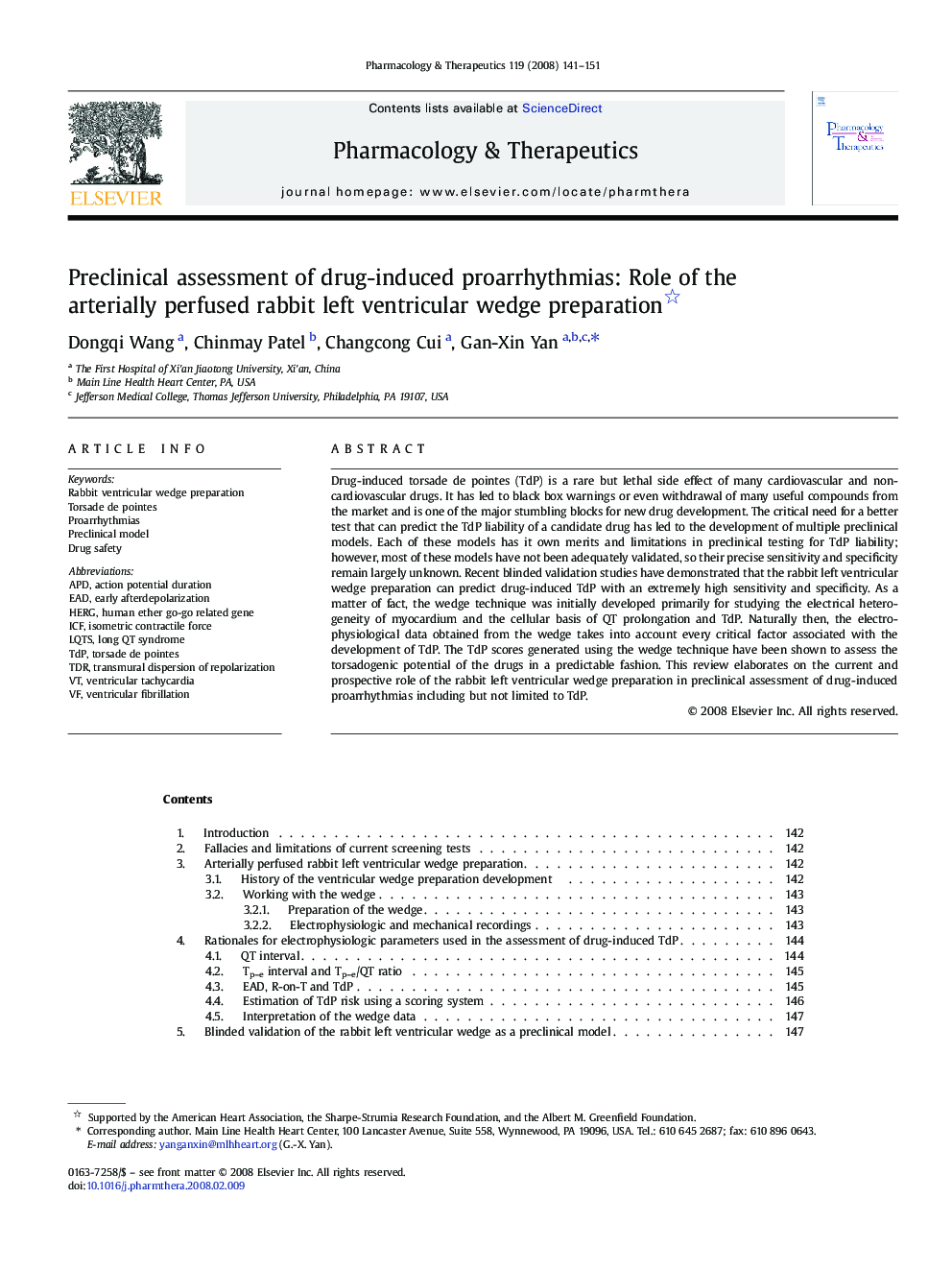| Article ID | Journal | Published Year | Pages | File Type |
|---|---|---|---|---|
| 2563862 | Pharmacology & Therapeutics | 2008 | 11 Pages |
Drug-induced torsade de pointes (TdP) is a rare but lethal side effect of many cardiovascular and non-cardiovascular drugs. It has led to black box warnings or even withdrawal of many useful compounds from the market and is one of the major stumbling blocks for new drug development. The critical need for a better test that can predict the TdP liability of a candidate drug has led to the development of multiple preclinical models. Each of these models has it own merits and limitations in preclinical testing for TdP liability; however, most of these models have not been adequately validated, so their precise sensitivity and specificity remain largely unknown. Recent blinded validation studies have demonstrated that the rabbit left ventricular wedge preparation can predict drug-induced TdP with an extremely high sensitivity and specificity. As a matter of fact, the wedge technique was initially developed primarily for studying the electrical heterogeneity of myocardium and the cellular basis of QT prolongation and TdP. Naturally then, the electrophysiological data obtained from the wedge takes into account every critical factor associated with the development of TdP. The TdP scores generated using the wedge technique have been shown to assess the torsadogenic potential of the drugs in a predictable fashion. This review elaborates on the current and prospective role of the rabbit left ventricular wedge preparation in preclinical assessment of drug-induced proarrhythmias including but not limited to TdP.
